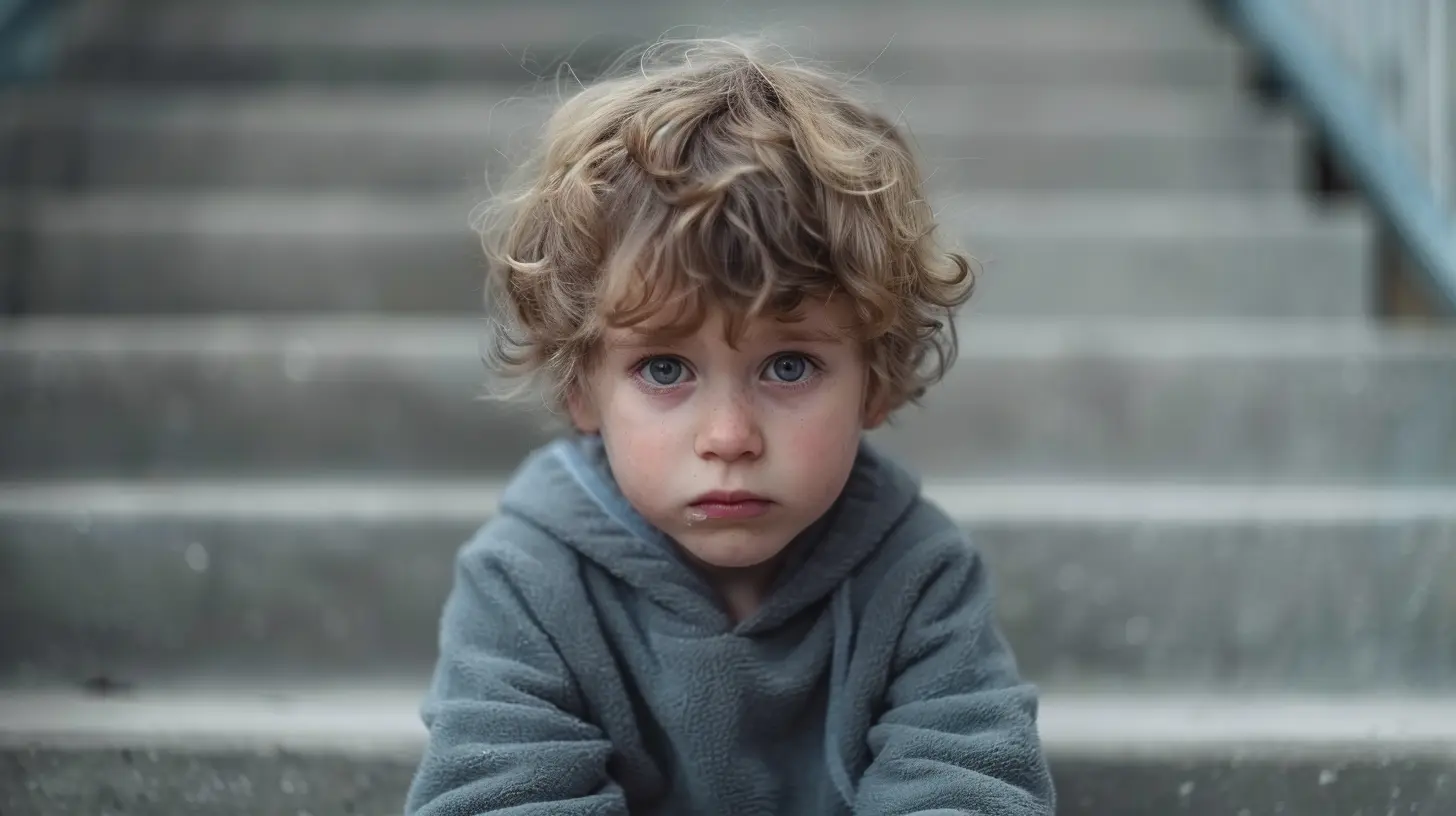Practical Tips for Managing Meltdowns in Public Spaces
2 November 2025
No parent is a stranger to the sudden storm that is a child’s meltdown—especially when it happens in a public place. One minute your toddler is quietly nestled in the shopping cart, the next, you’re on the receiving end of a full-blown tantrum in the snack aisle. Loud cries, flailing arms, maybe even some judgmental stares from passersby—sound familiar?
Managing meltdowns in public spaces is not just about surviving the situation. It’s also about preventing escalation, understanding your child’s needs, and keeping your cool (even when you're feeling anything but calm). Let’s dive into some practical, real-world tips for handling these tough moments—with empathy, sanity, and a touch of humor.
Understanding What a Meltdown Really Is
Before we talk strategies, let's clear something up: a meltdown isn't just a child "misbehaving."It’s an intense response to being overwhelmed—whether by noise, frustration, hunger, fatigue, or sensory overload. For toddlers and younger kids (and even older ones with sensory processing challenges or neurodiversity), a meltdown means their little brains are running on overload, and they haven’t yet developed the tools to self-regulate.
So, when we’re thinking about managing meltdowns, we’re not “disciplining bad behavior.” We’re helping our child work through an emotional storm they don’t yet know how to navigate.
1. Stay Calm (Even If You’re Dying Inside)
Let’s get the hardest one out of the way first: staying calm.Your child is losing it. Your heart’s racing. People are watching. It's a recipe for panic. But here’s the reality—your emotional state sets the tone. Kids feed off your energy.
Take a deep breath. Then another. Talk to yourself if you have to: “This is tough, but I got this.”
When you keep your cool, you’re showing your child what calm looks like. That’s powerful modeling.
Real Talk:
Think of yourself as their emotional anchor. If you get caught in the storm too, all bets are off.
2. Use a Calm, Low Voice
Ever tried yelling over a screaming child in Target? Doesn’t work, right?Lower your voice. Speak slowly. It might feel counterintuitive, but a calm tone can help de-escalate the situation. It tells your child: “I’m in control, and you’re safe.”
A soothing tone can act like a blanket for a frayed nervous system. Your voice becomes their cue to start coming back down from the emotional cliff’s edge.
3. Get on Their Level (Literally)
When possible, crouch down or kneel to make eye contact. Physically lowering yourself removes that towering presence and creates a sense of connection.Even just being eye-to-eye and saying, “I’m here. I get that this is hard,” can help diffuse some intensity.
Bonus Tip:
Use their name. Hearing their name said softly by someone they trust can feel grounding.4. Don’t Worry About What Others Think
Okay, easier said than done. But seriously—forget the side-eyes.Most parents have been there. The ones who judge? Probably either don’t have kids or are conveniently forgetting their own parenting mishaps. Your job isn’t to please the onlookers. It’s to guide your child through their big feelings.
Give yourself permission to be “that parent” right now. Your child’s emotional health matters more than some stranger’s opinion.
5. Identify the Trigger (If You Can)
Some meltdowns are spontaneous, others have an obvious cause. Hunger, boredom, overstimulation, or skipped naps—these are common culprits.If you can spot the trigger, you can sometimes problem-solve quickly.
Example: “Oh, you’re hungry! Let’s grab that snack.”
Can’t identify it? That’s okay too. Just focus on calming the storm first. You can play detective later.
6. Offer a Choice (When Appropriate)
Kids in meltdown mode often feel like they’ve lost all control. Giving them a simple choice can help them regain a sense of agency.Try something like:
- “Do you want to sit on this bench or stay in the cart?”
- “Would you like to carry the wipes or hold my hand?”
Nothing complicated. Just a bit of control handed back to them.
7. Use Distraction Tactically
Distraction isn’t bribery—it’s redirection. And at meltdown stage, it can be a lifesaver.Pull out a small toy, tell a silly joke, or point out something funny like “Whoa! That guy’s wearing a watermelon hat!”
It’s not a long-term solution, but it can buy you time to calm them down or exit the situation.
8. Remove Them From the Situation (If Possible)
Sometimes, the best solution is a tactical retreat.If you're in a grocery store, head to a quieter aisle. At a busy park? Walk to a calmer corner. A change in environment can help your child reset.
No need to punish them by isolating. Just gently guide them to a space where they can breathe without added stimulation.
9. Manage Your Expectations
Kids aren’t tiny adults—they’re still learning how to process life.So, your child isn’t going to behave perfectly all the time, especially in unfamiliar or overstimulating places. Expecting them to stay chill for hours of errands is like asking you to be cheerful after skipping sleep and getting stuck in traffic.
Set reasonable time limits. Pack snacks. Prepare for delays. Lowering the bar a little can save a lot of frustration.
10. Create a “Meltdown Toolbox”
Having a go-to pack of calming tools can be a game-changer.Here’s what it might include:
- A familiar stuffed animal
- Fidget toys
- Headphones (for noise-sensitive kiddos)
- Snacks
- A mini photo album or book
- Stickers
Pack this in your bag or car. When emotions start to boil, pull out your toolbox like Mary Poppins on a mission.
11. Teach Emotional Words (Post-Meltdown)
After a meltdown, when your child is calm, talk about what happened without shame or punishment.Try: “That was a rough moment today. You were really upset. What do you think made you feel that way?”
Labeling emotions helps kids understand and talk about their feelings instead of melting down next time.
Think of it as emotional vocabulary building. The better they can name it, the better they can tame it.
12. Practice Prevention
Want to avoid meltdowns altogether? While it’s not always possible, preventative care goes a long way.Here’s what helps:
- Regular snacks and meals
- Avoiding overstimulation (yeah, skip that third store)
- Giving five-minute warnings before transitions
- Making errands a bit fun (like pretending you’re on a treasure hunt)
Also, prep your child before going out. Let them know what to expect, and what behavior you’re hoping for. Kids thrive when they know the plan.
13. Give Yourself Grace
Parenting is hard. Public meltdowns? Even harder.But here’s the thing: it doesn’t mean you’re failing. It doesn’t mean your child is “bad.” It means you’re both human.
So, take it easy on yourself. Have a cry in the car if you need to (we’ve all been there). Call a friend. Then dust off and try again tomorrow.
You’re doing better than you think.
Final Thoughts
Meltdowns in public aren't just stressful—they're emotionally draining. You’re juggling parenting, judgment, and your own sense of calm all at once. But with the right mindset and a few solid strategies, you can handle them with grace (or at least without pulling your hair out).Remember, your child isn’t trying to ruin your day. They’re just overwhelmed, and you’re their safe place.
Next time the meltdown hits in the middle of aisle 9 or during your favorite café visit, take a breath, center yourself, and remember: this too shall pass. And you’ve got what it takes to ride the wave with love and patience.
You’ve got this, parent friend.
all images in this post were generated using AI tools
Category:
Special NeedsAuthor:

Noah Sawyer
Discussion
rate this article
1 comments
Berenice Meyers
Hang in there, fellow parents! Meltdowns are just part of the adventure. Embrace the chaos with a smile, try these tips, and remember: you’re all rockstars navigating this beautifully messy parenting journey! 🌟
November 2, 2025 at 4:09 AM

Noah Sawyer
Thank you! Embracing the chaos truly makes all the difference. We’re all in this together! 🌟


